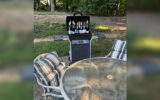In the summer, many of us turn to white or rosé wines for our vino enjoyment. But what about those who must have red? Have you ever thought about serving a chilled Cabernet Sauvignon or Merlot? I didn’t think so. Suppose you read articles about drinking red wine in the summer heat. In that case, it is generally recommended to opt for lighter-bodied wines.
Very well, but what exactly is a lighter body in wine? I say the best way to tell the difference is to taste a wine that is said to have a lighter body and follow that by having a taste of a wine that is said to have “full” body. For example, taste the Cabernet (which you won’t be chilling) and follow it with a taste of an unchilled Pinot Noir, or better yet, a Beaujolais made from the Gamay grape. The difference will probably be apparent.
Defining “body” can be tricky and inconsistent, at least for me anyway. Dwight Furrow, writing for Edible Arts, wrote an article entitled, “What Do We Mean By the ‘Body’ of a Wine”. In that article, he states that the most common definition is that the body of a wine consists of the perception of weight, volume, or viscosity. Then he gives examples where “Body” is not a single quality but a group of related yet distinct features that sometimes leave conflicting impressions. Thus, it isn’t apparent that the standard categories we use to indicate body type — light, medium, and full—are helpful except as a quick summary. They cover up a world of detail. So, if you find yourself discussing a particular wine’s body with someone, proceed with caution, or simply say, ‘ This is my perception.’
The blog Wine Pal says to chill the “light-bodied” red wine for 30 to 45 minutes in the fridge or 10 to 15 minutes in an ice bucket. Here are some wines they suggest you consider chilling: Pinot Noir, Beaujolais, Grenache (or Garnacha), Cabernet Franc, Lambrusco, Barbera, and Dolcetto.
May your summer wine sips be cool and refreshing. Cheers!






